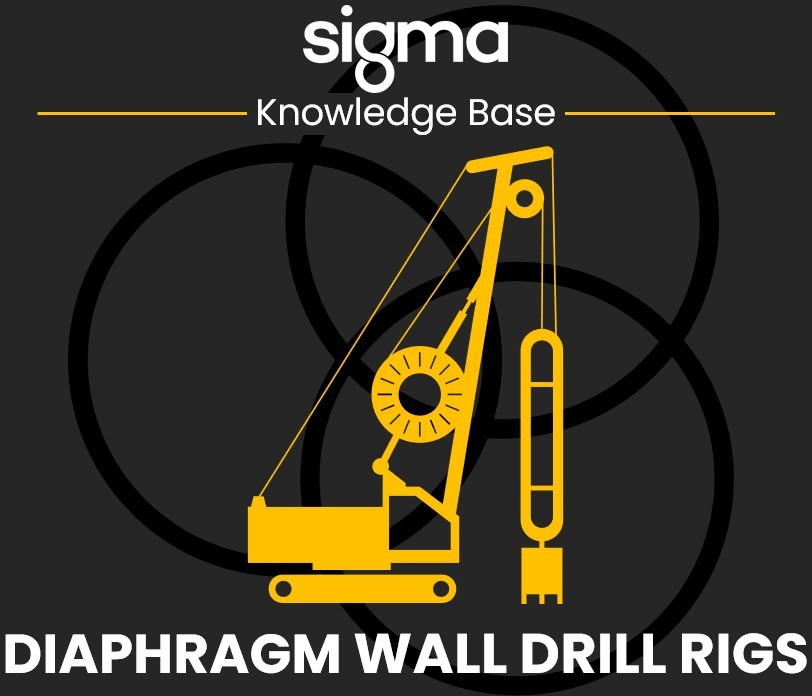
Introduction:
In the realm of civil engineering and construction, innovation continues to shape the way we approach complex projects. One such innovation that has revolutionized deep excavation and foundation construction is the diaphragm wall drilling rig. These robust machines play a crucial role in creating strong, stable, and deep foundations for various structures. In this blog, we will delve into the intricacies of diaphragm wall drilling rigs, exploring their components, working principles, applications, and the impact they have on modern construction.
Understanding Diaphragm Walls:
Before delving into the drilling rigs, let's understand what diaphragm walls are. Diaphragm walls are reinforced concrete walls constructed in the ground using a trench excavation method. They are commonly used to create underground barriers for deep basements, tunnels, and other subsurface structures. The primary purpose of diaphragm walls is to provide lateral support and prevent groundwater from seeping into the construction site.
Components of Diaphragm Wall Drilling Rigs:
Diaphragm wall drilling rigs are specialized machines designed for the efficient construction of diaphragm walls. These rigs are equipped with various components that work in harmony to ensure precise and controlled drilling. The key components include:
- Mast and Kelly Bar: The mast is the vertical structure that supports the drilling equipment, while the Kelly bar is a telescopic steel tube that transmits torque and crowd force to the drilling tool.
- Drilling Tool: Diaphragm wall drilling rigs use different types of drilling tools, such as augers or grabs, depending on the soil conditions and project requirements. These tools are attached to the Kelly bar for excavation.
- Power Pack: The power pack provides the necessary hydraulic power to drive the drilling process. It includes pumps, motors, and control systems that ensure the efficient operation of the rig.
- Control Cabin: Diaphragm wall drilling rigs are equipped with a control cabin where the operator manages the drilling process. The cabin contains advanced control systems and monitoring tools for real-time data feedback.
Working Principles:
Diaphragm wall drilling rigs operate based on the grab or auger drilling method. The drilling tool is lowered into the ground, and as it rotates, soil or other materials are excavated. The excavated material is then lifted to the surface for disposal. This process is repeated until the desired depth and width of the diaphragm wall are achieved.
Applications:
Diaphragm wall drilling rigs find application in various construction projects, including:
- Deep Basements: Diaphragm walls are commonly used to create underground barriers for deep basements in urban areas.
- Tunnels: Diaphragm walls provide stability to tunnel excavations by preventing ground movements and controlling groundwater inflow.
- Bridge Piers: Diaphragm walls are employed in the construction of bridge piers to ensure a solid foundation and resist lateral forces.
- Retaining Walls: Diaphragm walls are utilized as retaining walls to support vertical or near-vertical grade changes.
Conclusion:
Diaphragm wall drilling rigs have become indispensable in modern construction, enabling engineers to create strong and durable foundations for a wide range of structures. As technology continues to advance, these rigs will likely undergo further innovations, enhancing their efficiency and versatility. The future of construction is undoubtedly anchored in the capabilities of these powerful machines, unlocking new possibilities for infrastructure development around the globe.
Contact us with any enquiries!
T: +44 (0) 1642 206100
E: sales@sigmaplantfinder.com
Disclaimer: This blog post contains content generated by an artificial intelligence (AI) model. While we have made efforts to ensure the accuracy and quality of the information provided, it is important to note that AI-generated content may not always be error-free or fully aligned with current standards, regulations, or the latest research. We recommend using this information as a starting point for your research and analysis, but we strongly encourage you to verify the facts, consult experts, and cross-reference the content with trusted sources before making any decisions or drawing conclusions based on the information presented in this blog post. The views and opinions expressed in this content are not necessarily those of the blog's author or publisher, and we cannot be held responsible for any consequences that may arise from its use.
